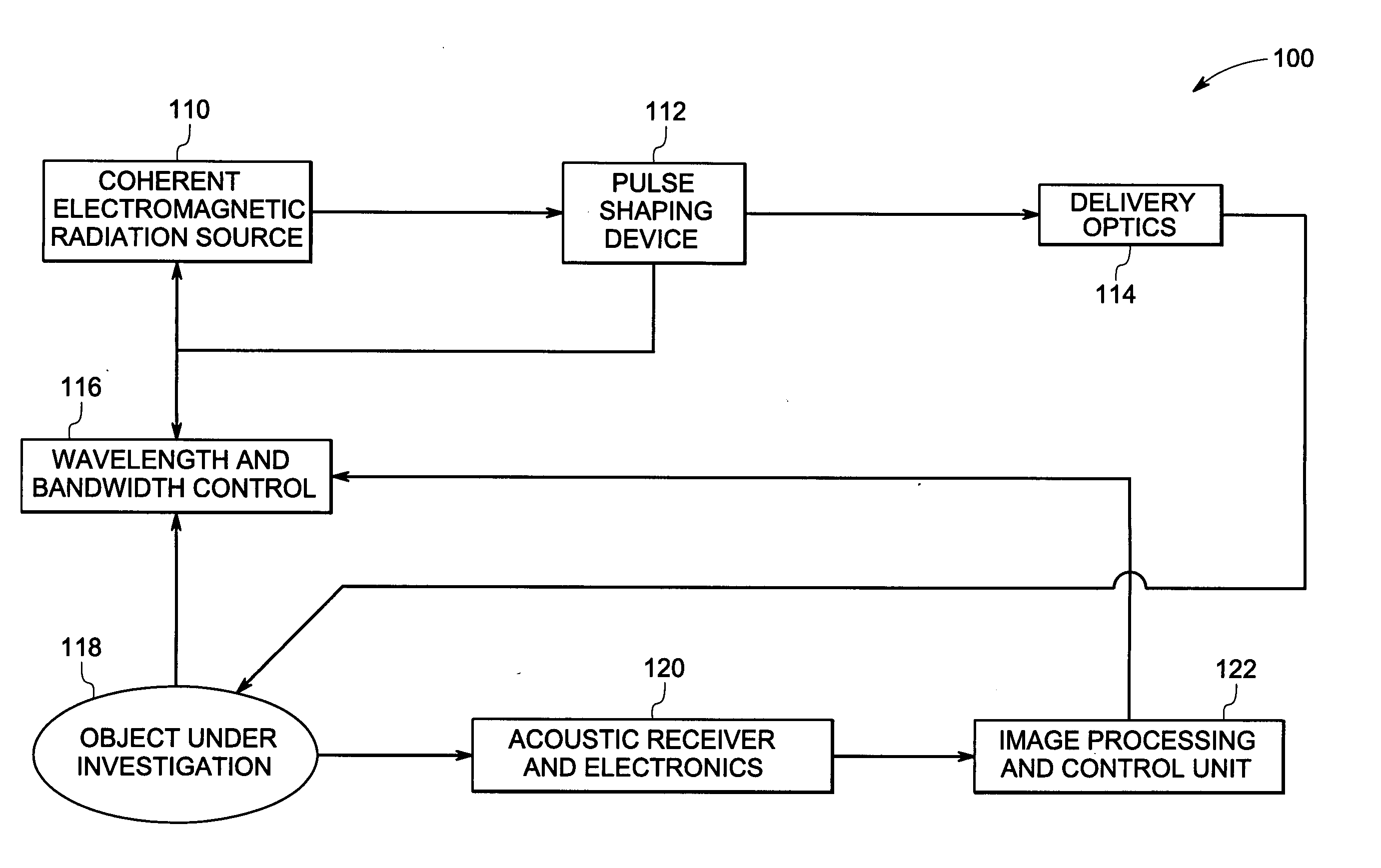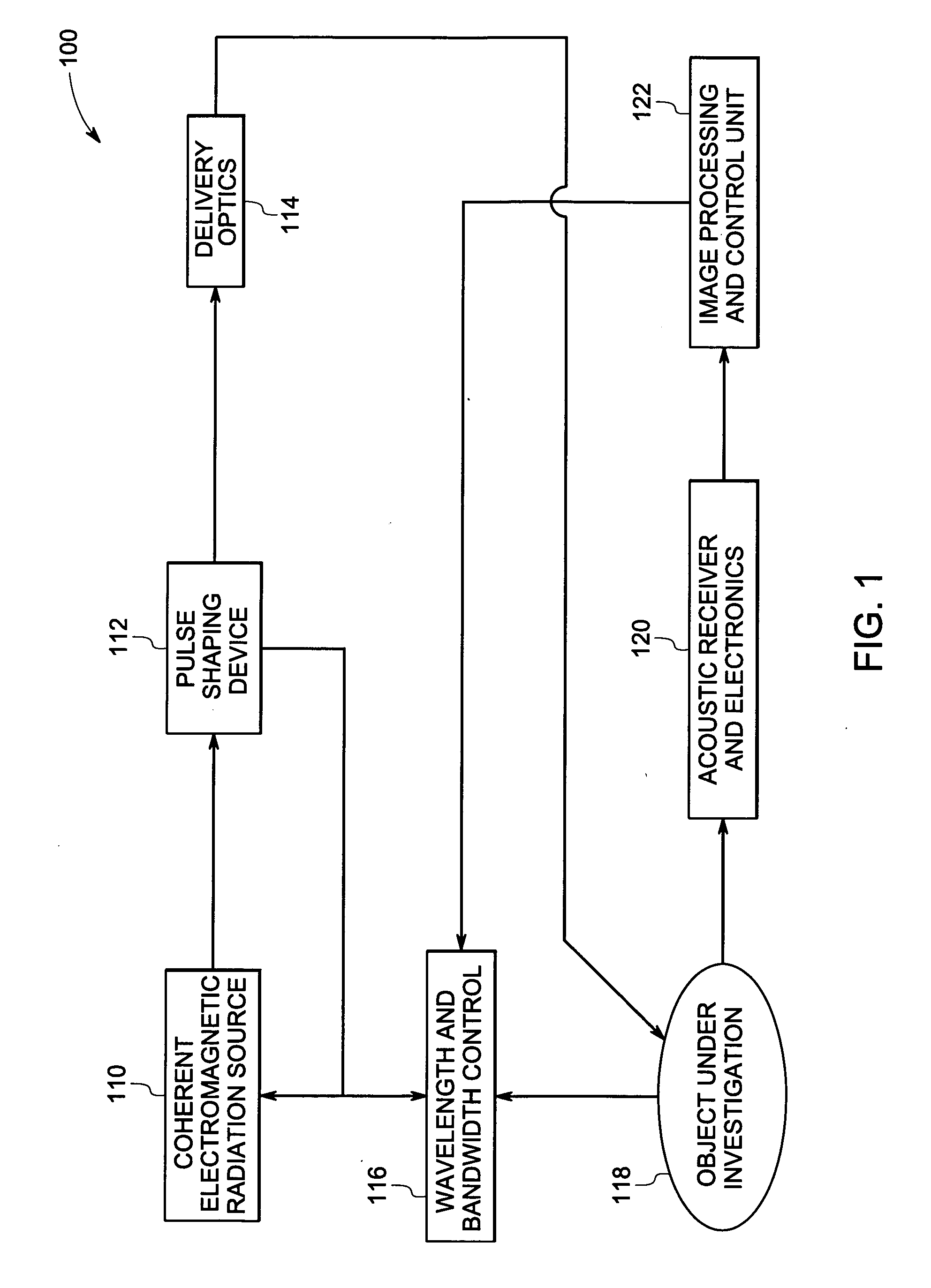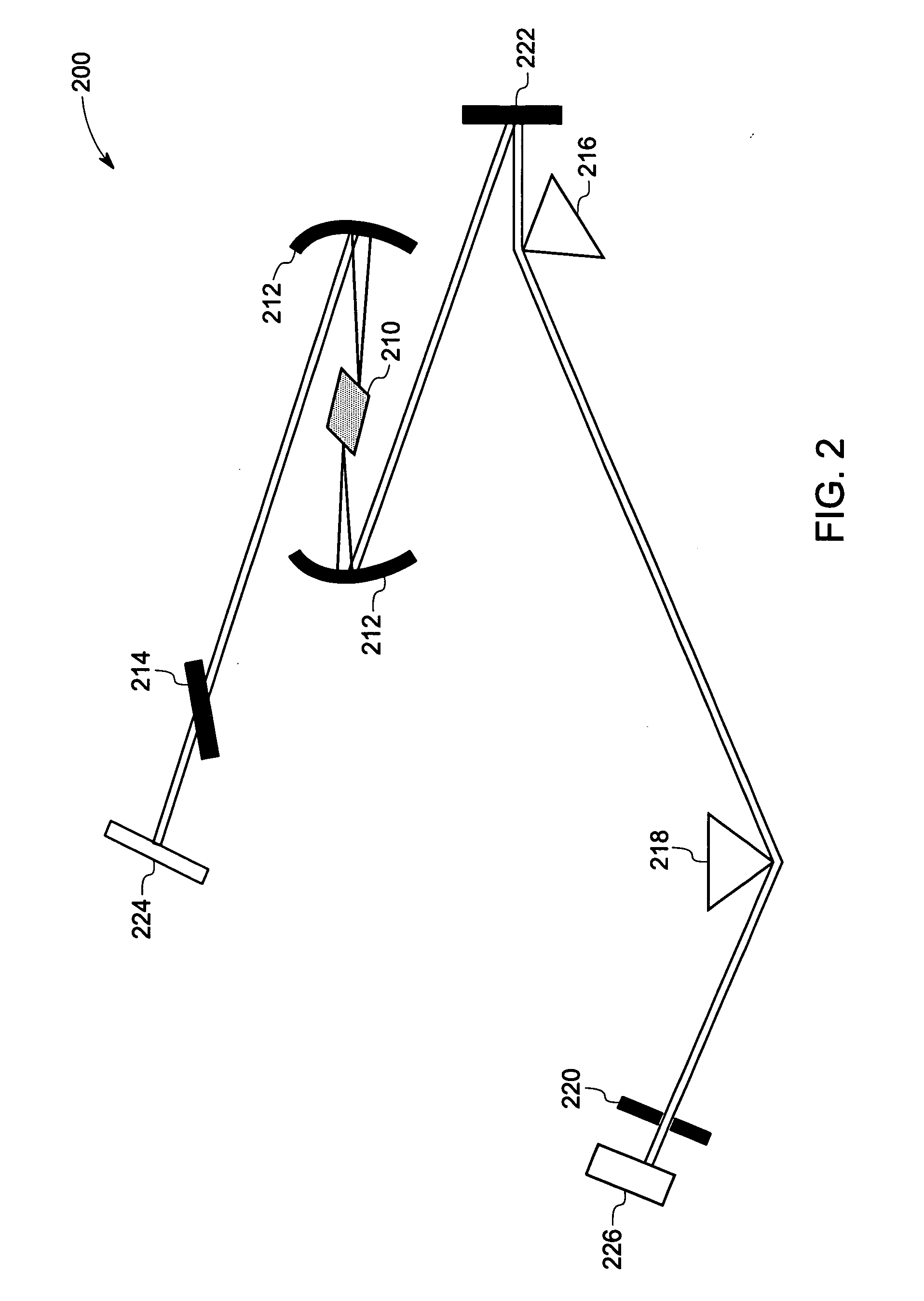System and method for optoacoustic imaging
a technology of optoacoustic imaging and system, applied in the field of optoacoustic imaging, can solve the problems of limiting the quality of data acquired, complex and varied biological objects such as tissues, and reducing the signal-to-noise ratio (snr)
- Summary
- Abstract
- Description
- Claims
- Application Information
AI Technical Summary
Benefits of technology
Problems solved by technology
Method used
Image
Examples
Embodiment Construction
[0020] The term “optoacoustic imaging” or interchangeably “photoacoustic imaging,” as used herein refers to the use of electromagnetic radiation to generate acoustic signal or waves in objects, to image structural or compositional characteristics of the object. In the case of biological objects, the characterization could be done, in vivo or in vitro.
[0021] The term “radiation” as described herein refers to electromagnetic radiation of any wavelength or frequency.
[0022] The term “imaging” as used herein refers to structural imaging such as tomographic imaging or alternatively to compositional imaging or both.
[0023] Optoacoustic imaging techniques typically uses an electromagnetic excitation signal, which is directed at an object. Absorption of radiation by the object results in heat output, leading to a rise in temperature locally, causing thermal expansion. The thermal expansion leads to the generation of pressure waves or acoustic waves, which propagate outward from the source ...
PUM
 Login to View More
Login to View More Abstract
Description
Claims
Application Information
 Login to View More
Login to View More - R&D
- Intellectual Property
- Life Sciences
- Materials
- Tech Scout
- Unparalleled Data Quality
- Higher Quality Content
- 60% Fewer Hallucinations
Browse by: Latest US Patents, China's latest patents, Technical Efficacy Thesaurus, Application Domain, Technology Topic, Popular Technical Reports.
© 2025 PatSnap. All rights reserved.Legal|Privacy policy|Modern Slavery Act Transparency Statement|Sitemap|About US| Contact US: help@patsnap.com



